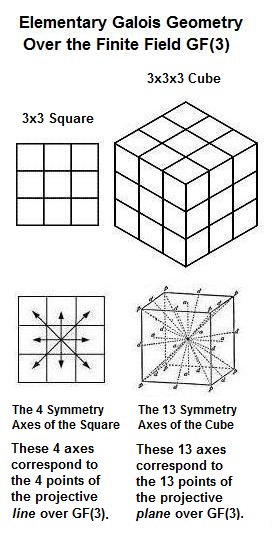An illustration from posts tagged Holy Field GF(3) —

See also a Log24 search for "Four Gods."
Recent reports of the death of a writer on philosophy associated
with All Souls College, Oxford, reflect some confusion.
The New York Times says the death was on Monday, January 2, 2017.
Other sources, including the college itself, say it was the day before —
Sunday, January 1 (New Year's Day), 2017.
At any rate, perhaps the following post from 9 PM ET Sunday night is relevant:
|
Sunday, January 1, 2017 Filed under: Uncategorized — m759 @ 9:00 PM See "Four Gods" in this journal.
Phaedrus 265b: "And we made four divisions |
See as well a search for All Souls in this journal.
See "Four Gods" in this journal.
Phaedrus 265b: "And we made four divisions
of the divine madness, ascribing them to four gods . . . ."
Rock guitarist Alvin Lee, a founder of
the band Ten Years After , died
on March 6, 2013 (Michelangelo's
birthday). In his memory, a figure
from a post Ten Years Before —
Plato's reported motto for his Academy:
"Let no one ignorant of geometry enter."
For visual commentary by an artist ignorant
of geometry, see a work by Sol LeWitt.
For verbal commentary by an art critic ignorant
of geometry, see a review of LeWitt by
Robert Hughes—
"A Beauty Really Bare" (TIME, Feb. 6, 2001).
See also Ten Years Group and Four Gods.

Stanley Cavell on the film North by Northwest—
"The 'nothing,' or naught, in the ROT monogram equally appropriately stands for origin, so its simultaneous meaning is that the actor is the origin of the character and also the origin of what becomes of himself or herself on film. The further thought that the human self as such is both an origin and a nothing is a bit of Cartesianism that is conceivably not called for in the context of this film."
— Cavell on Film , SUNY Press, 2005, pp. 44-45
For another central O, see Four Gods in this journal.
The film's mistaken-identity plot involves a fictional character named Kaplan. For a real Kaplan, see a 2001 New Yorker piece.
For a related catchphrase, see Kaplan Boo.
"In the space of horizons that neither love nor hate"
— Wallace Stevens, "Things of August"
Seven years ago yesterday—
For some context, see Rosetta Stone as a Metaphor.
Related material from the University of Western Australia—

Projective plane of order 3
(The four points on the curve
at the right of the image are
the points on the line at infinity.)
Art critic Robert Hughes, who nearly died in Western
Australia in a 1999 car crash, actually met his death
yesterday at Calvary Hospital in the Bronx.
See also Hughes on "slow art" in this journal.
I. General finite geometry (without coordinates):
A finite affine plane of order n has n^2 points.
A finite projective plane of order n has n^2 + n + 1
points because it is formed from an order-n finite affine
plane by adding a line at infinity that contains n + 1 points.
Examples—
|
|
|
II. Galois finite geometry (with coordinates over a Galois field):
A finite projective Galois plane of order n has n^2 + n + 1
points because it is formed from a finite affine Galois 3-space
of order n with n^3 points by discarding the point (0,0,0) and
identifying the points whose coordinates are multiples of the
(n-1) nonzero scalars.
Note: The resulting Galois plane of order n has
(n^3-1)/(n-1)= (n^2 + n + 1) points because
(n^2 + n + 1)(n – 1) =
(n^3 + n^2 + n – n^2 – n – 1) = (n^3 – 1) .
III. Related art:
Another version of a 1994 picture that accompanied a New Yorker
article, "Atheists with Attitude," in the issue dated May 21, 2007:

The Four Gods of Borofsky correspond to the four axes of
symmetry of a square and to the four points on a line at infinity
in an order-3 projective plane as described in Part I above.
Those who prefer literature to mathematics may, if they like,
view the Borofsky work as depicting
"Blake's Four Zoas, which represent four aspects
of the Almighty God" —Wikipedia
"… Mondrian and Malevich
are not discussing canvas
or pigment or graphite
or any other form of matter.
They are talking about about
Being or Mind or Spirit.
From their point of view,
the grid is a staircase
to the Universal…."
The Shining of Apollo
"Plato's most significant passage may be found in Phaedrus 265b: 'And we made four divisions of the divine madness, ascribing them to four gods, saying that prophecy was inspired by Apollo, the mystic madness by Dionysos, the poetic by the Muses, and the madness of love […] by Aphrodite and Eros' (trans. by H.N. Fowler, in the Loeb Classical Library)."
— Saverio Marchignoli, note on section 20, paragraphs 115-119, of the Discourse on the Dignity of Man (Oratio de hominis dignitate) (1486) by Pico della Mirandola, considered the "Manifesto of the Renaissance."
Related material:
A Mass for Lucero,
The Shining of May 29,
Shining Forth,
Sermon for St. Patrick's Day, and the phrase
Diamond Struck by the Sun.
Powered by WordPress